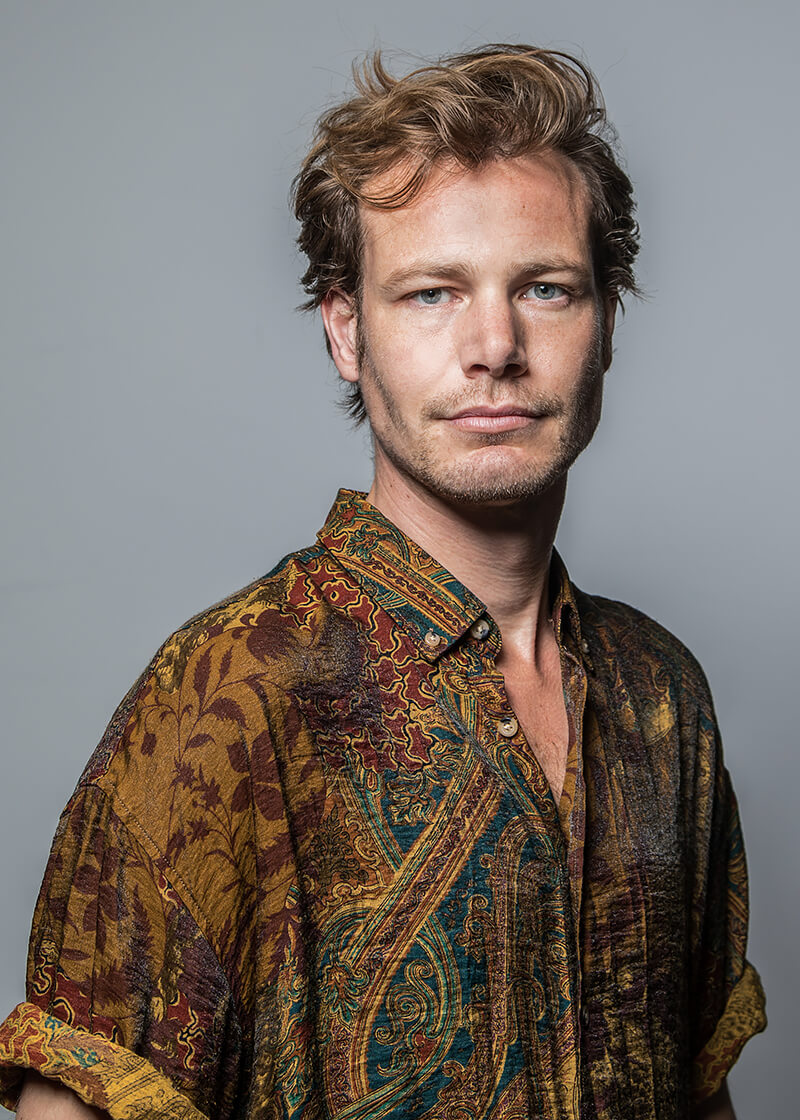I try to look at the world as open and honestly as possible. No prejudices about people and not take things for granted. I'm a sensitive person, which means that I use my feelings as a guideline for everything I do. I think more with my heart than with my head.
As a photographer I'm fascinated by the diversity of people. What are their motivations, on what do they base their choices in life and what is their purpose. This fascination began at an early age, when I was traveling with my parents through Europe. I used the old camera from my grandmother and I was immediately intrigued by this medium. After high school I studied Media & Information Management. But I soon realized that this was not for me and that my interest in photography was still there. So I began to study photography at the Photo Academy in Amsterdam where I graduated end of 2013.
One of my strengths is that people quickly feel comfortable with me. This is because I have a sincere interest for the people I photograph and I'm open minded. This advantage I use in my photography. The photos I make are created from the feeling and trust that people have with me. They are personal, intimate and real.
I'm not looking for the reality, because in my opinion, that doesn't exist. What I try to capture is a poetic, melancholic and romantic version of life. For my own projects I work with analogue cameras, because this expresses the mood I'm looking for. The magic of analog is that you never know for sure what the result will be. I encourage the viewer to use his or her own imagination.
Since graduating I have been working as a freelance photographer for many different clients. I like the alternation between commercial assignments with a short span and my own long-term projects.
About One Year
In a very short space of time, Geert Broertttes lost the most important women in his life. His aunt, grandmother and mother passed away. He shared his grief with his girlfriend, who became a recurring theme in this series. But even this relationship ended, a couple of months after his mother passed.
Broertttes photographed the process instinctively. It was only afterwards that he noticed the coherence of his work. It became a poetic story about love, loss and grief.
The beautiful photographs, all shot analogue in raw black and white, reveal the dark feelings he experienced during this intense period in his life.
All about One Year
About Project K
In March 2019 Geert had been suffering from abdominal pain for a while and it was getting worse. He had a rectal bleeding on the toilet and lost two liters of blood. After a few days in the hospital the doctor came with bad news. Geert had a tumor in his colon. They told him that he could not be saved anymore because the cancer had already spread to his lymph nodes, liver and lungs. After a second and third opinion in different hospitals the image was drastically adjusted. "It was all very strange and confusing, but after a few intense weeks the oncologists came with the message that I could get better." In April was the first operation, half of his colon was removed, then he underwent three chemotherapy treatments and in august he had another operation to remove pieces from his liver and gallbladder. His cancer is genetic. He got it because of the Lynch syndrome that his father was carrying, he past away last November.
When Geert was diagnosed with colon cancer, Lotte asked him if she could make a portrait of Geert: "pure, without the presence of poisonous medicine in his body". That moment turned out to be the start of project 'K', in which we chose analogue photography to represent the three most common cancer treatments: chemotherapy, radiotherapy and surgery.
Directly after his chemo, we used Geert's urine to soak the fim rolls with chemo. This way, we represented chemotherapy. To represent radiation, 4x5 inch film was irradiated in AMC hospital: the square in the middle of the film symbolizes Geerts' colon tumor which has the same size. Lastly, we partially burned some negatives to represent the surgery.
With this series, we wanted to visualize the world you live in as a patient, and the huge contradiction in the treatments: it is made to make you better, but it breaks you down as well. Project "K" is about the fucked up reality in which strength and vulnerability play the lead role and hope is the constant factor.
We are Geert Broertjes & Lotte Bronsgeest
"Lotte explores the vulnerability of the body and the transience of life play an important role in her work, in which she always searches for the point where beauty meets confrontation. People are often quick in their judgement about each other, basing their opinions on the clothed body. Lotte is intrigued by discrepancies between opinions and reality."
"Geert is fascinated by the diversity of people. What are their motivations, on what do they base their choices in life and what is their purpose. His work is a poetic, melancholic and romantic version of reality. He encourages the viewer to use his or her own imagination. His work is personal and emotional."
We both graduated in 2013 from the Photo Academy in Amsterdam, that is where we met. We work as freelance photographers for different clients and create our own projects.
Project K Website